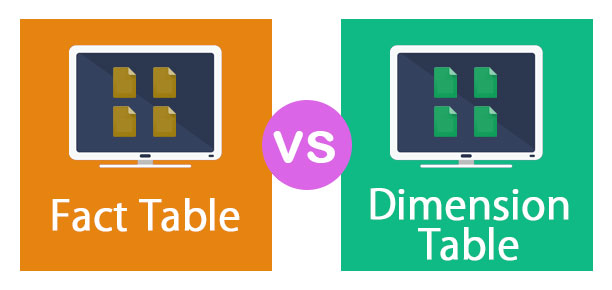Fact tables and dimension tables are essential components of a dimensional data model in data warehousing, but they serve distinct purposes and have different characteristics. Here are the key differences between fact tables and dimension tables:
-
Purpose:
- Fact Table: The primary purpose of a fact table is to store quantitative data, known as facts or measures, about a business process or activity. Fact tables contain numerical data that represent the metrics or performance indicators of interest for analysis and decision-making.
- Dimension Table: The primary purpose of a dimension table is to store descriptive attributes that provide context and categorization for the quantitative data stored in the fact table. Dimension tables contain categorical or textual data that describe the dimensions or aspects of a business process.
-
Data Type:
- Fact Table: Fact tables primarily contain numeric measures or metrics, such as sales revenue, quantity sold, cost, profit margin, etc.
- Dimension Table: Dimension tables primarily contain categorical or textual data, such as product names, customer demographics, geographic locations, time periods, etc.
-
Content:
- Fact Table: Fact tables store data related to the quantitative aspects of a business process. They contain measures or metrics that can be aggregated and analyzed, such as sales revenue, quantity sold, profit margin, etc.
- Dimension Table: Dimension tables store descriptive attributes that provide context for analyzing the data in the fact table. They contain attributes that categorize or describe the dimensions or aspects of the business process, such as product names, customer demographics, geographic locations, etc.
-
Granularity:
- Fact Table: Fact tables are designed to capture data at a specific level of granularity or detail. The granularity determines the level at which facts are aggregated and analyzed, such as daily, weekly, monthly, etc.
- Dimension Table: Dimension tables do not have a specific granularity. They contain attributes that describe different levels of detail within each dimension, allowing for flexible analysis at different levels of granularity.
-
Structure:
- Fact Table: Fact tables typically have a wide and flat structure, with multiple columns representing different measures or metrics. They often contain foreign keys that reference dimension tables.
- Dimension Table: Dimension tables typically have a narrow and tall structure, with multiple rows representing different descriptive attributes within each dimension. They often contain surrogate keys and may include hierarchical structures.
-
Volume of Data:
- Fact Table: Fact tables generally contain a large volume of numeric data, as they store quantitative measures related to business transactions or events.
- Dimension Table: Dimension tables generally contain a relatively low volume of data compared to fact tables, as they primarily store descriptive attributes that provide context for analyzing the data in the fact table.
-
Normalization:
- Fact Table: Fact tables are typically denormalized structures optimized for query performance and analytical processing. They may contain redundant or duplicated data to simplify queries and avoid joins with other tables.
- Dimension Table: Dimension tables may be normalized or denormalized depending on the specific requirements of the data warehouse. They may include redundant or duplicated data for efficiency in querying.
In summary, fact tables and dimension tables serve different purposes and contain different types of data. Fact tables store quantitative measures or metrics about a business process, while dimension tables store descriptive attributes that provide context for analyzing the data in the fact table. Both types of tables are essential components of a dimensional data model and are used together for multidimensional analysis and reporting in data warehousing environments.
Thank you,

